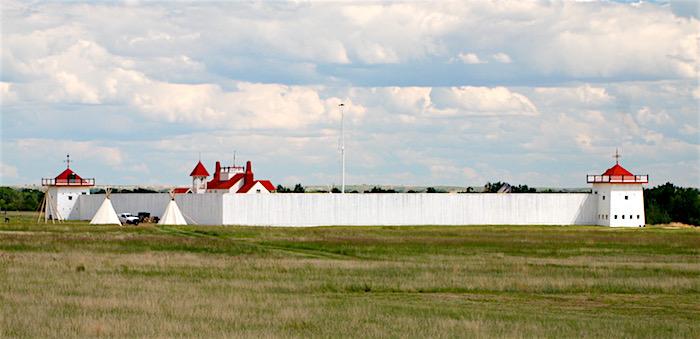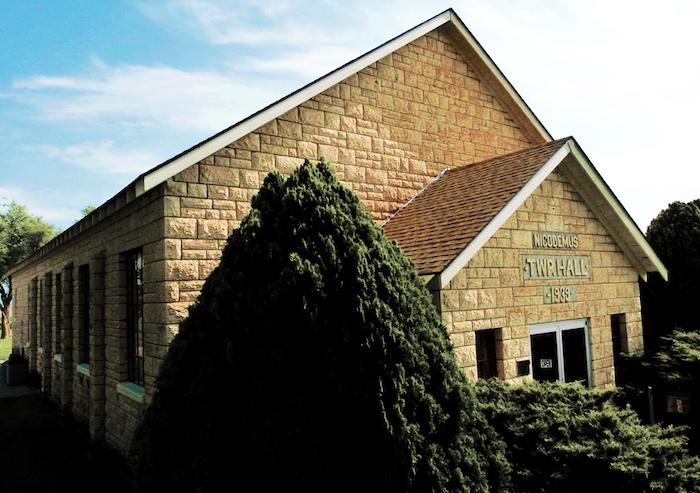
Since the Blue Ridge Parkway generated 1,000 times more in economic activity than Fort Union Trading Post National Historic Site last year, perhaps the trading post should be given to North Dakota to manage/Kurt Repanshek file
Did you hear the news? The more than 330 million people who visited the National Park System last year generated nearly $36 billion in economic activity. Good to know, but we're guessing folks don't visit a park to see how much they spend or how much a business makes. If that were the case, folks would be rooting for Burnett Oil Co. to strike it big in Big Cypress National Preserve in Florida.
No, odds are good, very good, that folks went to Yellowstone to see Old Faithful and bison and wolves, and that they visited Everglades to add to their bird list and see if they could tell the difference between an alligator and a crocodile. They no doubt went to Grand Canyon not with strong intentions to buy a commemorative water bottle, but rather to gaze into that incredible maw carved by the Colorado River, and headed to Yosemite to perhaps stand atop Half Dome or be mesmerized by Yosemite Falls.
New River Gorge National River attracts visitors who enjoy white-water rafting or climbing or mountain biking, and they head to Valley Forge to better understand the forging of the United States of America.
And yet, instead of focusing on these natural, cultural, and historic wonders and promoting the parks for what they protect, preserve, and provide for our country and its visitors, each year the Interior Department (no matter the administration) crunches the numbers and instructs park managers to promote how much economic activity their visitors generated. Congress, they say, responds to economics, and so we must measure the value of the National Park System with the parks' economic output.
Put another way, we've devalued the wonders of the parks and see them only as valuable if they are turbo-charged 8-cylinder economic engines.
“This report illustrates the incredible economic value of our national parks, and further shows the value in President Trump's plan to rebuild park infrastructure,” Interior Secretary Ryan Zinke said the other week when he released the economic report. “National parks provide us a gateway to the outdoors, family recreation opportunities, and connect us to our history and heritage, and they are extremely vital to local economies all across the nation. Parks provide jobs and fuel the outdoor recreation and tourism economy."
In compiling the report, Secretary Zinke's staff also put together the top 15 parks in terms of economic development. While Blue Ridge Parkway topped that list, with more than $1 billion in economic activity, Fort Union Trading Post National Historic Site generated just $1 million. Should we interpret that to mean Blue Ridge is 1,000 times better and of more value to the National Park System than Fort Union? If so, perhaps Interior should give Fort Union to North Dakota and save the annual budget of a bit more than $830,000.
Tule Springs Fossil Beds National Monument didn't even register in Interior's economic generator, so why not just decommission the park and save a quarter-million dollars a year? Also missing was Valles Caldera National Preserve, which received more than $3.3 million for its FY17 budget. Can anyone explain why the federal government is supporting Nicodemus National Historic Site, which had an economic impact of but $160,000 last year, with a $682,000 budget?

Last year the National Park System generated $36 billion in economic activity, according to the Interior Department. But Nicodemus National Historic Site contributed just $160,000, or a little less than a quarter of its annual budget/NPS, Will Pope
If we're going to measure the value of our public lands, both inside and outside the National Park System, by how much economic activity they generate, then by all means either shrink Bears Ears and Grand Staircase-Escalante national monuments to put the valuable energy deposits outside them, or allow for energy development inside their borders. And don't fret about the rutting of Big Cypress, for think of the economic impact full field development would produce there (if there's a field to develop).
Never mind about the visitors who come to these places intent on spotting a bird they've never seen before, being awestruck by the hoodoos of Bryce Canyon National Park, paddling a river, climbing a mountain, angling for trout or salmon, better understanding our country's history, or simply relaxing and rejuvenating their bodies and their minds in a bucolic or historic setting.
Interior would have us believe that economic output equates with great value. If you believe that, then you're for energy exploration on these landscapes as well as more infrastructure to shoe-horn more paying/buying customers into these already crowded places to benefit not the parks, but more so the business interests, and leading to more degradation of these special places. And you could care less about the Fort Union Trading Posts and Nicodemuses of the system.
Don't forget John Muir's words: "Nothing dollarable is safe, however guarded."
If Congress only reacts to economic value, why, when the park system last year had an economic output roughly three times its deferred maintenance backlog, won't Congress make the necessary appropriations to wipe out that backlog and further increase the value of the parks?
We need to jettison the mindset that Congress will lose interest in the parks if they can't be seen as economic engines. It isn't working. Not only has the Park Service's budget been flat for too long, but the two pieces of legislation designed to address the maintenace backlog are mired in committee -- one for more than a year -- and that backlog has being growing steadily since the last century. Obviously, economics aren't motivators for the politicians when it comes to financially supporting the National Park System.
What needs to be pressed home to Congress is that they should invest in these places because of what they represent, what they protect, and what they afford us -- the Americans who own the park system -- as recreational outlets, cultural outposts, and history lessons, not cash registers.
The economic boost is nice and will still follow, but we can only hope, probably fruitlessly, that Interior a year from now will tout not dollar signs but the wonders that exist in the parks system.



Comments
I agree that hyping economic activity misses the whole point of the National Park idea and could be a double-edged sword to cut less profitable units. This supposed economic benefit of National Parks seems exaggerated in at least two ways.
It's based on visitation estimates with sometimes flawed mathematical assumptions. I believe parks like Smokies and Olympic, which contain major transportation corridors, greatly overestimate the true number of visitors.
Second, there would still be some economic activity, perhaps even more in the short term, if any given park had never existed.
Both very good points Tahoma. Particularly the second one. The Parks may change the location of economic activity to the benefit of those communities (and detriment of others) but they "create" far less than many so called studies claim.
Parks are not just economic engines. They are established to preserve and protect the unique natural and cultural resources they contain. Their value does not depend on the amount of money they generated for local communities. Their value depends on what they can teach us about America, our history and our natural resources. Lets not get into the numbers game and value parks according to the money they generate for local communities. This will only devalue many parks and lead to confusion. Let us prize every park for the unique resources it contains and what we can learn from these resources.
Harry - agreed
I agree with both Tahoma and Harry, just like ecbuck!
Yep, folks on NPT may argue up one side and down the other on politics or science or other topics, but pretty much everyone here values parks and wants parks unimpaired for future generations even beyond our kids & grandkids.
Please, Kurt -- BE CAREFUL. Don't give the idiots in Congress any ideas. They may not even ever have heard of places like Nicodemus, Ft. Union, and Tule Springs. Now they'll want to dump them.
Hi Kurt,
Great article! I totally agree that the policymakers should see the intrinsic value of our public lands. They represent the and protect the beautiful lands that inspire millions of Americans every year. BUT as I learned from Professor John Crompton, who helped Texas Parks and Wildlife effectively double their annual appropriations, the economic argument has to be made for lawmakers to get behind any idea. I have been working with NPCA to help convince our Texas delegates to sign onto the Legacy Act, and aside from sharing my experiences and my passion with them, the most effective way to get them behind a cause is to show how it can positively affect the economy. I wish it weren't so. Ideally, we wouldn't have to make the economic case for parks for them to see the value in them, but that seems to be the way it works when it comes to policymakers. It's very sad.
Thanks for your wonderful blog and for bringing these issues to our attention!
Chris Liu
But Chris, it's not working. If it were, there wouldn't be a nearly $12 billion backlog, would there?